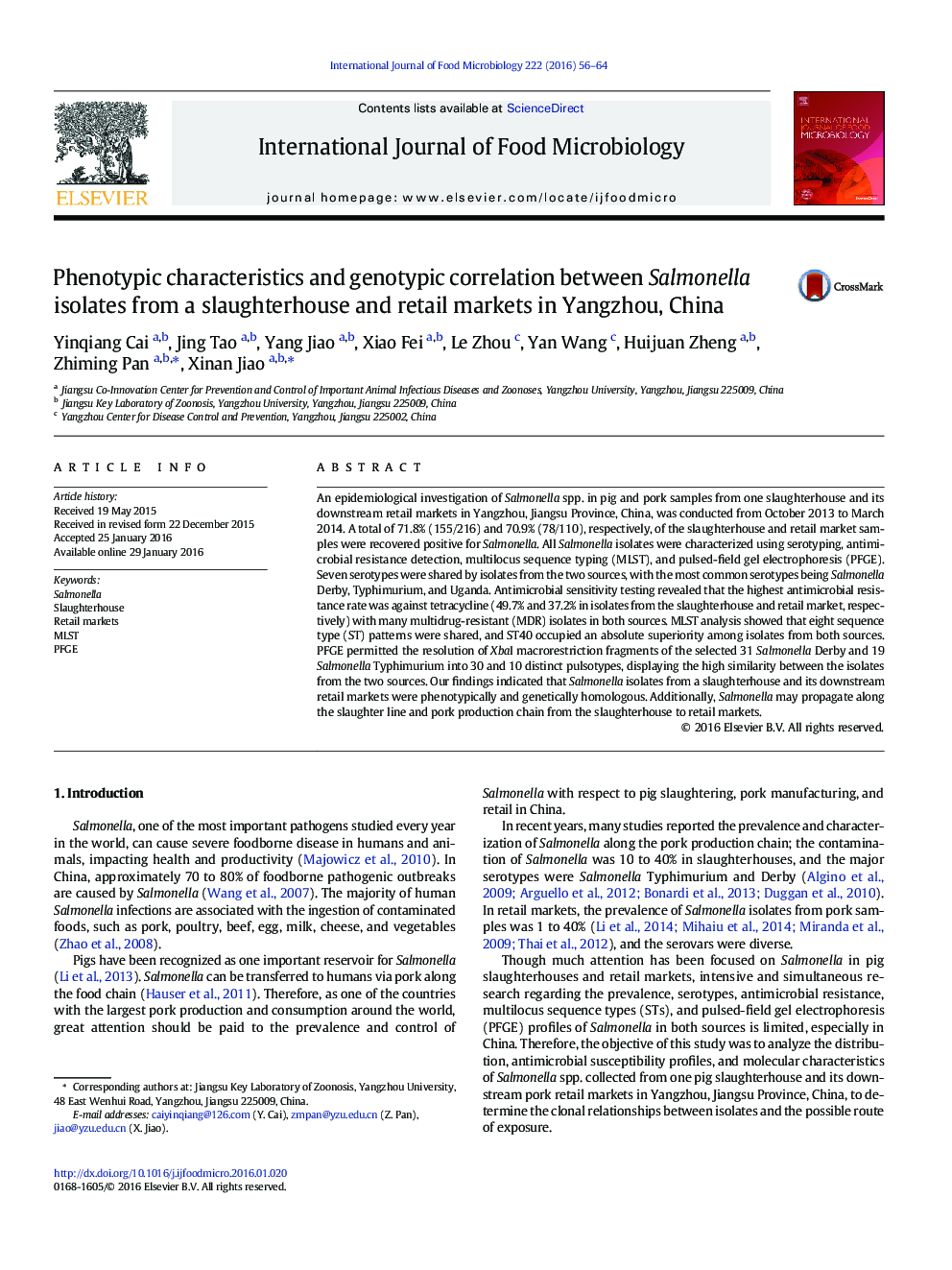| Article ID | Journal | Published Year | Pages | File Type |
|---|---|---|---|---|
| 4366354 | International Journal of Food Microbiology | 2016 | 9 Pages |
•High Salmonella contamination was detected in both the slaughterhouse and retail markets.•Salmonella Derby was most prevalent in both the slaughterhouse and retail markets samples.•Salmonella was proved to be disseminated both along the slaughter line and from the slaughterhouse to retail markets.
An epidemiological investigation of Salmonella spp. in pig and pork samples from one slaughterhouse and its downstream retail markets in Yangzhou, Jiangsu Province, China, was conducted from October 2013 to March 2014. A total of 71.8% (155/216) and 70.9% (78/110), respectively, of the slaughterhouse and retail market samples were recovered positive for Salmonella. All Salmonella isolates were characterized using serotyping, antimicrobial resistance detection, multilocus sequence typing (MLST), and pulsed-field gel electrophoresis (PFGE). Seven serotypes were shared by isolates from the two sources, with the most common serotypes being Salmonella Derby, Typhimurium, and Uganda. Antimicrobial sensitivity testing revealed that the highest antimicrobial resistance rate was against tetracycline (49.7% and 37.2% in isolates from the slaughterhouse and retail market, respectively) with many multidrug-resistant (MDR) isolates in both sources. MLST analysis showed that eight sequence type (ST) patterns were shared, and ST40 occupied an absolute superiority among isolates from both sources. PFGE permitted the resolution of XbaI macrorestriction fragments of the selected 31 Salmonella Derby and 19 Salmonella Typhimurium into 30 and 10 distinct pulsotypes, displaying the high similarity between the isolates from the two sources. Our findings indicated that Salmonella isolates from a slaughterhouse and its downstream retail markets were phenotypically and genetically homologous. Additionally, Salmonella may propagate along the slaughter line and pork production chain from the slaughterhouse to retail markets.
